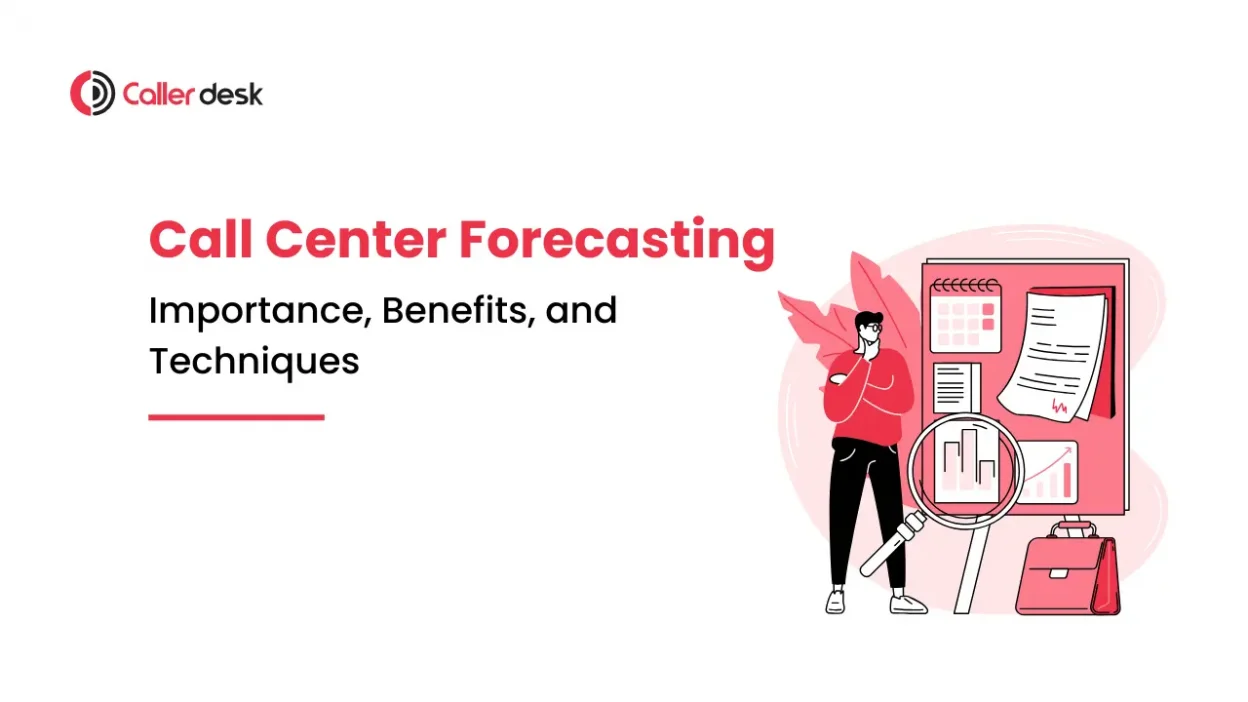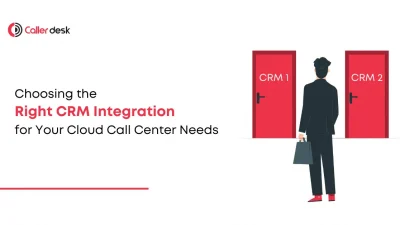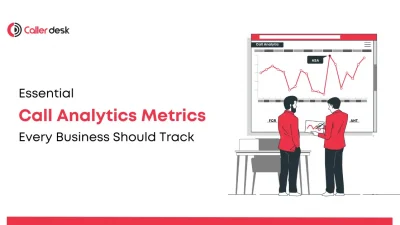Imagine a call center where every customer gets a quick response, agents aren’t too busy or too idle, and costs are kept under control. This ideal situation is possible with call center forecasting. By predicting incoming call volume, businesses can plan staffing effectively, ensuring smooth operations and better customer service.
Call center forecasting also known as contact center forecasting tools help businesses analyze past call trends, seasonal patterns, and real-time data to make accurate predictions. Whether it’s a small contact center or a large-scale operation, the right call forecasting strategy ensures agents are available when needed—without overstaffing or unnecessary costs.
This blog will explore the importance of Contact center forecasting, its benefits, and the various call center forecasting techniques used to achieve precise predictions. Understanding these methods can improve customer satisfaction and operational efficiency.
What is Call Center Forecasting?
Call center forecasting is a way to predict how many calls a call center will get in the future. It helps businesses plan the right number of agents, so customers don’t have to wait too long, and costs stay under control.
This process looks at past call records, finds patterns, and uses simple technology to estimate future calls. With the right call forecasting methods, call centers can run smoothly, keep customers happy, and avoid overstaffing or understaffing.
Importance of Call Center Forecasting
1. Efficient Resource Allocation
With call center forecasting, businesses can predict how many calls they will get and make sure enough agents are available. This reduces wait times for customers and makes the contact center work smoothly. It also prevents agents from being too busy or sitting idle.
2. Cost Management
Accurate call forecasting helps businesses avoid hiring too many agents or too few. This saves money while making sure customers get quick service. A good call center forecasting strategy helps manage costs without affecting customer experience.
3. Service Level Maintenance
No one likes waiting on hold for too long. Call center forecasting techniques help businesses plan better so customers get fast responses. This also helps meet service level agreements (SLAs) and ensures smooth service.
4. Makes Agents’ Jobs Easier
Too many calls make agents feel stressed. Too few calls make them bored. Call center forecasting tools help balance their work, so they stay happy and productive. Happy agents mean better service for customers!
5. Helps Business Grow
A well-planned contact center helps businesses grow. By looking at past call trends, companies can decide when to hire more agents or train existing ones. Forecasting call center needs early helps businesses stay ready for busy times and expand smoothly.
Benefits of Call Center Forecasting
1. Happier Customers
With call center forecasting, businesses can reduce wait times and ensure customer calls are answered quickly. When customers don’t have to wait long, they are more satisfied, leading to better reviews and loyalty.
2. Lower Costs and Higher Profits
A well-planned call center forecasting strategy helps businesses avoid unnecessary costs. By predicting call volumes, companies don’t have to over-hire or pay for extra staff they don’t need. This helps balance costs and profits.
3. Enhanced Decision Making
Good call center forecasting tools provide useful data for managers. This helps them make better choices about staffing, training, and operations. With the right insights, businesses can improve efficiency and service quality.
4. Better Crisis Management
Unexpected spikes in calls can be stressful. A strong contact center forecasting system helps businesses prepare for busy times, emergencies, or sudden changes in demand. This means smoother operations, even during crises.
5. Better Workforce Planning
With call centre forecasting, managers can schedule shifts better. This makes sure the right number of agents are working at the right times, avoiding overstaffing or understaffing. A well-planned schedule leads to a stress-free work environment.
Different Techniques used for Call Center Forecasting
1. Historical Data Analysis
One of the simplest ways to forecast calls is by studying past trends. Call center forecasting tools analyze previous call volumes to identify patterns, such as seasonal spikes or busy hours. This helps businesses predict future calls and plan staffing accordingly.
2. Time Series Analysis
This technique looks at call volume changes over time. Call centre forecasting methods like time series analysis help businesses see long-term trends and short-term fluctuations, making it easier to plan for busy or slow periods.
3. Workforce Management (WFM) Software
Advanced call center forecasting tools like WFM software use algorithms to predict call volumes and suggest the best staffing levels. These tools can process large amounts of data and adjust forecasts in real time, helping businesses stay prepared.
4. Regression Analysis
Forecasting call center operations isn’t just about past data—it’s also about knowing what affects call volume. Regression analysis studies how events like marketing campaigns, product launches, or weather changes impact the number of calls.
5. Artificial Intelligence and Machine Learning
AI-powered contact center forecasting tools analyze massive datasets to find hidden patterns. Unlike traditional methods, AI continuously learns and improves, making call forecasting more accurate. This is especially useful for businesses dealing with unpredictable call volumes.
Conclusion
Getting call center forecasting right is important for smooth and efficient customer service. When you can predict call volumes accurately, you make sure there are enough agents to handle calls. This reduces wait times, keeps customers happy, helps agents work better, and lowers costs.
There are many ways to forecast call center activity, from looking at past data to using AI and machine learning. Each method helps businesses plan better and stay ready for both daily operations and unexpected call spikes.
Want to improve your call center forecasting? CallerDesk offers simple and effective solutions to help you manage staffing, improve customer service, and make better business decisions. Contact us today to see how we can help your call center run more smoothly!





